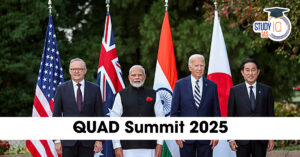Table of Contents
High Net-Worth Individuals (HNWIs)
Context: The number of high net-worth individuals (HNWIs) in India increased by 12.2% in 2023 compared to 2022, resulting in a total of 3.589 million HNWIs.
More In News
- The total financial wealth of India’s HNWIs grew by 12.4% in 2023, reaching $1,445.7 billion.
- A significant market upswing in 2023 contributed to a $3.8 trillion increase in India’s overall national wealth.
- India featured as one of the top performers in the Asia-Pacific (APAC) region, which saw an overall HNWI wealth growth of 12.2% and a 7.9% increase in HNWI population.
- The resilience of India’s economy and the robust performance of its equity markets were key factors driving the wealth growth among HNWIs.
- India’s market capitalization saw a substantial rise of 29% in 2023, following an increase of 22% in 2022.
About High Net-Worth Individuals (HNWIs)
- High net-worth individuals (HNIs) are part of the financial services sector and are defined as individuals with an investible surplus of more than Rs 5 crore. Those with lesser amounts are considered retail investors.
- Net Worth: It is calculated by the excess of assets over liabilities.
- HNIs are specifically identified by their investable assets such as bonds and stocks that exceed a certain value threshold.
- Exclusion of Certain Assets: The classification of HNIs does not include primary residences, durable goods, or collectibles in the calculation of liquid assets.
- HNIs are highly sought after by private wealth managers due to the substantial work involved in preserving and managing their large asset bases.
- Wealth managers typically earn a commission based on the total assets they manage.
- Investible Surplus: It refers to the additional money an individual has available for investment in assets expected to appreciate in value.
- This does not include money put into real estate or assets not expected to yield returns, such as personal use items like a primary residence, cars, or farmhouses.
- Example: An individual with a house worth Rs 5 crore, bank fixed deposits worth Rs 1 crore, and a car worth Rs 50 lakh is not considered an HNI. Despite a total net worth exceeding Rs 6 crore, only the Rs 1 crore from fixed deposits is considered investible surplus.
- Categories of HNIs:
- High-net-worth individuals (HNWIs): Those with liquid assets valued between Rs 5 lakh and Rs 5 crore.
- Very-high-net-worth individuals (VHNWIs): Those with liquid assets valued between Rs 5 crore and Rs 25 crore.
- Ultra-high-net-worth individuals (UHNWIs): Those owning more than Rs 25 crore in liquid assets.
Six Day War
Context:
- The Six-Day War occurred between June 5 and June 10, 1967, involving Israel and its Arab neighbours—Egypt, Jordan, and Syria.
- This brief but intense conflict dramatically altered the Middle East’s political landscape, influencing regional maps and power dynamics.
Historical Context
- Roots of the Conflict: The origins of the conflict trace back to the establishment of Israel, which resulted in significant displacement and death among Palestinian Arabs, creating a major refugee crisis.
- Tensions with Arab Neighbours: Particularly strained relations with Egypt, led by President Gamal Abdel Nasser, centred around territorial disputes and water rights. These tensions were compounded by a military buildup supported along Cold War lines—Israel by the West (notably the U.S.), and the Arab states by the Soviet Union and its allies.
Causes For War
Immediate Causes of the War
- Naval Blockade: The immediate trigger was Egypt’s blockade of the Straits of Tiran in May 1967, a critical maritime route to the Israeli port of Elath, severely impacted Israeli commerce.
- Military Mobilizations: Concurrently, Egypt mobilised forces in the Sinai Peninsula, which Israel viewed as a direct threat and used as a justification for pre-emptive military action.
Course of the Conflict
- Outbreak and Operations: On June 5, Israel launched a preemptive strike against Egyptian airfields, quickly achieving air superiority and effectively neutralising the Egyptian Air Force. This was followed by ground operations in Sinai and the Gaza Strip.
- Expansion of the War: Following Israel’s initial strikes, Jordan and Syria launched attacks from the north and south, respectively.
Outcome and Consequences
- Territorial Gains: Israel rapidly achieved victory, capturing the Sinai Peninsula and Gaza Strip from Egypt, the Golan Heights from Syria, and the West Bank and East Jerusalem from Jordan—all within a week.
- Arab Defeat and Aftermath: The defeat was a significant blow to the Arab states, cementing Israel’s geopolitical dominance in the region and substantially altering its strategic landscape.
- Rise of Palestinian Nationalism: The war significantly propelled Palestinian nationalism and the prominence of the Palestine Liberation Organization (PLO) as a key political entity.
- Long-term Impact: The war’s outcomes have perpetuated ongoing regional tensions, particularly concerning Israel’s continued occupation of territories including East Jerusalem, the West Bank, and Gaza.
- Palestinian Refugees: The issue of Palestinian refugees displaced during the Six-Day War remains unresolved.
| 1973 Yom Kippur War |
| This conflict is often viewed as a direct attempt by the Arab states to reclaim the territories lost in the Six-Day War, although it also ended in an Israeli victory. |
Examples, Case Studies and Data
Case Study: The Feminization of Agriculture and its Vulnerability to Climate Change
- Women constitute 43% of the global agricultural workforce.
- In South Asia, over two-thirds of employed women work in agriculture.
- In eastern Africa, more than half of the farmers are women.
- Despite their significant role, women’s agricultural productivity lags 20-30% behind men.
- Closing the gender gap in productivity could boost global GDP by US$ 1 trillion and reduce food insecurity for 45 million people.
- Women spend four hours a day on unpaid domestic and care work, while men spend less than two.
- Female-headed households experience an 8% greater income loss due to heat stress and 3% more due to floods compared to male-headed households.
- Only 3% of climate finance is directed towards the agricultural sector.
- Only 6% of climate actions in national adaptation plans mention women.
Feminization of Agriculture and Its Causes:
- Out-migration of men seeking urban employment opportunities is a major driver of the feminization of agriculture.
- Climate change impacts on agriculture also push men towards alternative income sources.
- Families often adopt a dual livelihood strategy, relying on both farming and migrant wage work.
Polarised Discourse on Feminization:
- Some view feminization as empowering for women, increasing their agency and decision-making power.
- Others link it to agrarian distress, highlighting challenges in land ownership, credit access, and technology adoption.
Climate Change Exacerbates Vulnerabilities:
- Women’s dependence on natural resources like water and fuel makes them more vulnerable to climate change.
- Climate change increases women’s workloads, particularly in unpaid domestic and care duties.
- Climate shocks disproportionately affect female-headed households, leading to greater income losses.
The Need for Gender-Responsive Climate Action:
- Climate finance should be directed more towards agriculture and adaptation efforts.
- National adaptation plans should prioritise gender mainstreaming and address the specific needs of women in agriculture.
- Addressing gender inequalities in agriculture is crucial for achieving food security and sustainable development.


 SSC MTS Salary 2025, Check Highest Salar...
SSC MTS Salary 2025, Check Highest Salar...
 F-35 Fighter Jet Stranded in Kerala: Dis...
F-35 Fighter Jet Stranded in Kerala: Dis...
 Quad Summit 2025: Key Announcements, Str...
Quad Summit 2025: Key Announcements, Str...





















